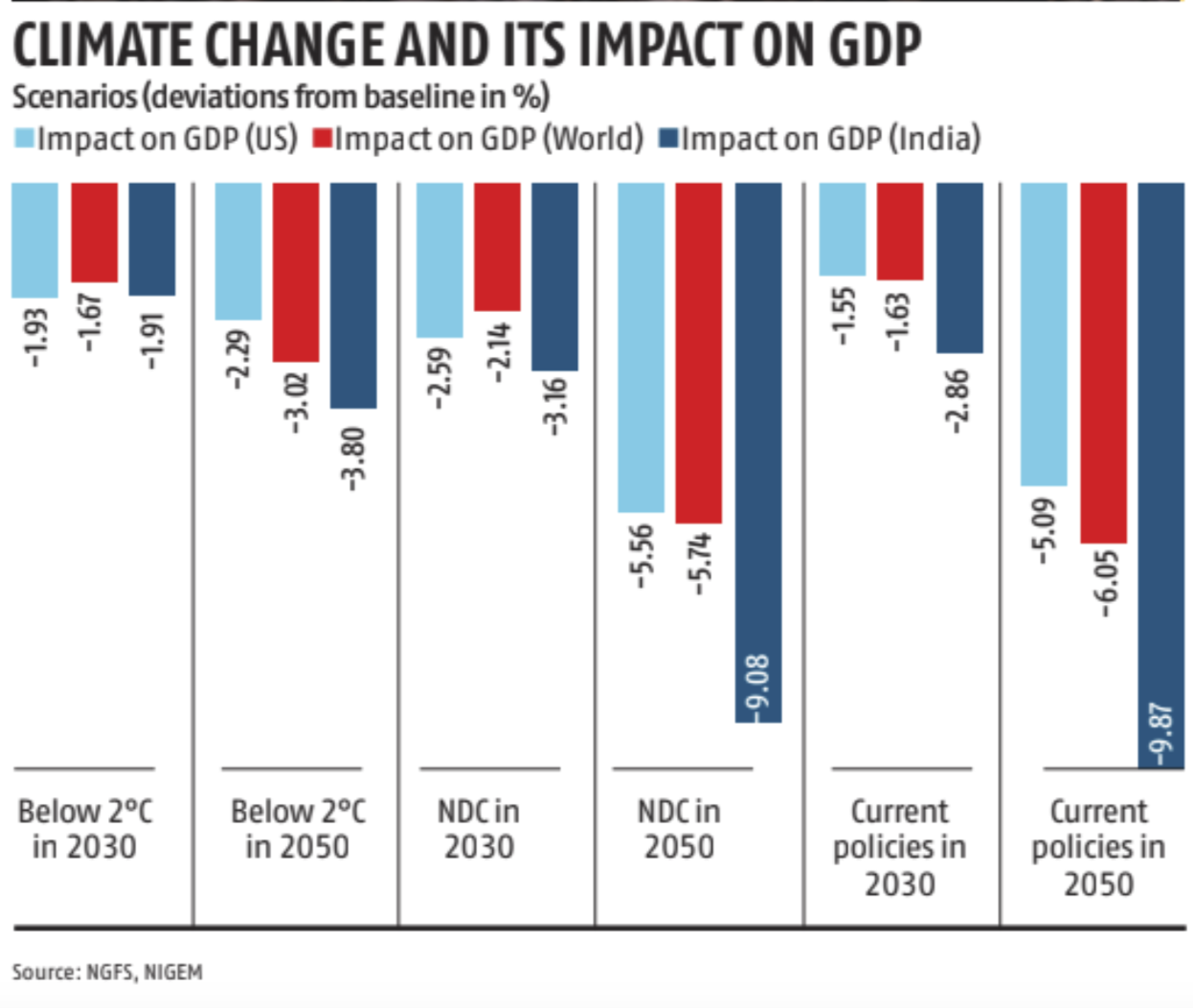ForumIAS announcing GS Foundation Program for UPSC CSE 2025-26 from 19 April. Click Here for more information.
ForumIAS Answer Writing Focus Group (AWFG) for Mains 2024 commencing from 24th June 2024. The Entrance Test for the program will be held on 28th April 2024 at 9 AM. To know more about the program visit: https://forumias.com/blog/awfg2024
Contents
Source: The post is based on the article “RBI, green finance and the blue planet” published in Business Standard on 15th May 2023
What is the News?
Reserve Bank of India (RBI) has released a report titled “Report on Currency and Finance: Towards a Greener Cleaner India”.
The report has highlighted the impact of climate-change-induced risks on macro-financial prospects and the need for dedicated research to draw up a range of policy options to address them.
How do Climate change-induced risks impact Financial stability?

Financial stability, the core mandate of central banks around the world, can face risks due to climate change.
The pressure of currency depreciation in countries frequently affected by climate disasters can cause financial instability, higher import costs, and negative terms of trade.
Giving other examples of how climate change can affect inflation and financial assets, the report says that climate change can affect price stability through supply shocks such as food and energy shortages.
Additionally, demand shocks can arise when firms and households lose wealth on account of frequent natural disasters.
Further, climate-induced uncertainty can make households save more for precautionary purposes, bringing down the real equilibrium interest rate, which is the interest rate at which the demand for money matches the supply.
What does the other report say about the impact of climate change on financial stability?
The International Monetary Fund’s INFORM Climate Risk Index — an open-source risk assessment for crises and disasters— has stated that within BRICS (Brazil, Russia, India, China and South Africa) economies and the major advanced economies(AEs), India is the most vulnerable to physical risks arising from climate change.
In terms of preparedness and resilience to transition risks, while most AEs have high resilience and low exposure, BRICS is less resilient and highly exposed. India is the least resilient within it,
But on the greener side, the country is also the highest ranked by the G-20 in climate protection performance, according to the Climate Change Performance Index 2023.
What are the steps taken by banks in India to face the impact of climate change on financial stability?
A January 2022 survey by the Sustainable Finance Group (in the RBI’s Department of Regulation) said that although banks have begun taking steps in climate risk and sustainable finance, concerted effort and further action are needed.
For instance, a majority of banks surveyed did not have a separate business unit, or vertical for sustainability and ESG (environment, social and governance) related initiatives.
Only a few had a strategy for embedding ESG principles in their businesses, scaling up their sustainable finance portfolios, and incorporating climate change risks into their existing risk-management framework.
As for board-level engagement on these issues, a third of the banks said, responsibility for overseeing such initiatives was yet to be assigned.
Only a few had factored in ESG-linked “Key Performance Indicators” in the performance evaluation of their top management.




